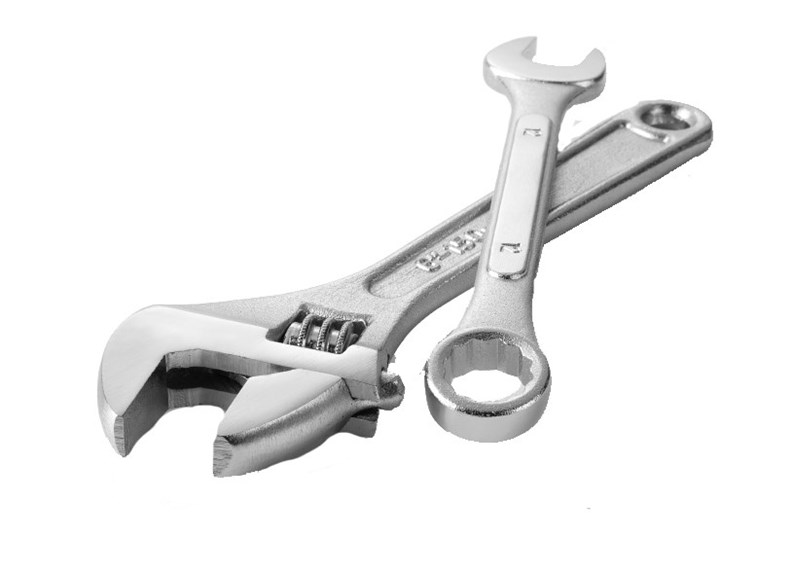To swim a straight fifty-foot lap, the majority of New York's eight million souls have no choice but to brave the Hudson River. This is not the case, however, for residents of Trump Place at 200 Riverside Boulevard, who merely need to head downstairs to their building's indoor pool, part of a 6,000-square-foot spa on the first floor. Following a bracing swim, they can spend a minute or two being "revitalized" beneath the spa's heated mineral waterfall.
At the Horizon building on 37th Street, the swimming pool's 44th floor perch affords a panoramic view of the East River. For a more concentrated workout, without the distraction of this breathtaking view, the building also offers a swimming machine - essentially a treadmill for swimmers - on the 4th floor.
And at the Promenade on East 76th Street, residents also have a terrific river view from their pool on the 38th floor, with the option to soak in one of two Jacuzzi tubs beside it. Hard to believe that these water wonderlands dot the landscape of a bustling metropolis, isn't it? Mineral waterfalls notwithstanding, they are actually far more common than one might expect.
American Leisure Corporation, the spa and fitness management company located in New York City that maintains the various bodies of water at both the Horizon and Trump Place, also manages about 35 other indoor pools, and 20 summer pools in New York City. Another company, Long Island based Total Pool Management, is responsible for approximately 45 swimming facilities in the area, according to owner Howard Sklar.
"A pool is a great amenity for a building - a real selling point," says Joseph Grimes, the Promenade's managing agent. His building houses its pool and Jacuzzis inside a two-story health club, and according to Grimes, "A lot of the reason people bought into this building is for the pool and the club facilities."
The Promenade's swimming pool itself imposes a very minimal financial burden on residents of the 208-unit building, says Grimes. Shareholders pay somewhere between $870 and $2,200 per month in total common charges, depending on the size of their unit. Of this total, Grimes estimates that $78 is allotted to the management of the health club.
This is surprisingly low, given the amount of maintenance that a pool requires, especially one that is open to all residents between 6 a.m. and 10 p.m., seven days a week, year-round, with a certified lifeguard on duty at all times. In fact, it would probably cost more to join a less desirable health club that does not have a pool.
From this perspective, it makes sense that swimming pools are often incorporated into the plans of a luxury building as a developmental afterthought; an added touch - like a marble lobby - that will charm prospective buyers. However, it also obscures the fact that swimming pools do add considerable weight to tenant and building manager responsibilities. Literally speaking, upward of a hundred thousand pounds.
Don Amblo, vice president of operations at American Leisure, points out that swimming pools carry heavy responsibilities in part because they literally impose a lot of weight on the building. "One gallon of water weighs about eight pounds," he says. "A 20-by-40-foot pool at four-feet deep has about 24,000 gallons and will weigh over 190,000 pounds." If something goes awry and the pool springs a leak, or a filling hose is left on accidentally, the immediate consequences can be devastating to the physical structure of a building.
Amblo says that the overriding rule in all matters with regard to pool safety is that you leave nothing to chance. Having worked as a certified pool operator for more than 15 years, he has "seen it all" and knows that without proper management, urban buildings, people, and water can add up to disaster with a force that is greater than the sum of its parts. "I make sure all the right safeguards are in place," he says.
One essential safeguard, from a managerial perspective, is liability insurance and employee compensation. A building with a pool must take out a policy worth a million dollars or more to be adequately protected. Other safeguards are more obscure. For instance, it's essential that a switch to shut down a whirlpool motor is readily accessible, in the rare-but-possible event that a person's hair or bathing suit gets stuck in the drain and they can't come up for air, as has happened in the past.
The pool staff also needs to be trained on a regular basis, and monitored - particularly when dealing with chemicals. "You need to have real, direct supervision of the employees," says Grimes.
The importance of his words is emphasized by a nightmarish but true story. Years ago, the residents in a high rise condo in Manhattan had to be evacuated late in the evening on December 24th after a lifeguard went to the filter room and accidentally poured muriatic acid into a chlorine vat. Acid and chlorine combine to make chlorine gas, which can be lethal if inhaled. The lifeguard passed out from the caustic fumes, and was pulled out just in time to survive. The first people on the scene got violently ill, and the fire department had to close down the whole street, forbidding residents to return to the building until the spill was cleaned up and the hazard eliminated.
This situation is dramatic, and worth noting only to emphasize the importance of a properly trained and supervised staff. If a pool facility is properly managed, residents of all ages should be able to comfortably enjoy the pleasure and good health that a pool can provide. Sklar says that while the issues he deals with most often are slips and falls and stubbed toes, in the spirit of leaving nothing to chance, he recommends that people take the initiative to make sure that all the essential precautions are being taken to secure a safe swimming environment. These precautions include checking water clarity, alerting pool staff to notable odors - like the smell of excessive chlorine - and making sure the lifeguard is attentive and the safety equipment is in good condition.
Mandatory safety equipment, which includes a spine board with a neck collar, a red lifeguard pontoon, a 24-inch life ring with a safety rope, a CPR mask, and a hook and pole, should always be in clear view. "The latest trend is also to have a cardiac resuscitator, which costs about $2,500," says Sklar. "It's not a requirement, but I have a feeling that in the next couple of years it will be."
Indoor and outdoor pools require similar maintenance procedures. They both require a certified lifeguard to be on duty at all times. Their chemical levels must be taken every two hours, and adjusted if necessary. The decks must be kept clear, the pool must be vacuumed, and the filters must be maintained and cleaned. And this must all be done with vigilance. If the chemical levels are not properly balanced, not only is the health of the swimmers endangered, but the pool's entire ecosystem is as well.
"Say you have a cement pool, and the calcium hardness gets too low," says Amblo. "Water demands calcium, so it will take that calcium from the cement in the pool. And if it gets too high, it will eat the pool's motor and mechanical parts."
This essential balance can be trickier to strike for an outdoor pool, though, which tends to get more use, because it is a novelty - open from Memorial Day to Labor Day - and is also exposed to more elements, from rain and sun to tanning oils. Further, because outdoor pools are generally more active, they are in greater demand of programming.
"There's usually two types of swimmers, the ones doing laps and the ones who want to get wet and frolic, and they have a tendency to clash and vie for space," according to Sklar. Some pools will use a rope and float to mark off distinct activity areas, while others will schedule different activities for different times of day. This is another essential balance to strike, because tensions can run high in hot weather - especially when an elderly resident, lounging poolside, gets splashed by a child.
Another situation that tends to arise more frequently in outdoor pools is the contamination of a pool with human waste - usually courtesy of diaper-clad tots or overexcited toddlers. Pool staff should employ preventive tactics, like keeping an eye on parents with diapered babies, but if the worst happens, the pool should be evacuated immediately, and "shocked" with enough chlorine that all the bacteria are killed.
"There is no state code addressing diapers specifically," says Sklar, "it's left up to the discretion of that pool." In Sklar's view, as long as a child is wearing the proper swimming attire, whether that means a swimming diaper or rubber pants over a regular diaper, the sooner they start swimming the better.
"It's the biggest safety precaution you can have to teach your child to swim as early as possible," he says, highlighting what seems to be the predominant irony in the field of swimming pool maintenance: that safety precautions - the chemicals, the equipment, and the how-to-swim learning curve - can lead directly to hazardous events.
All things considered, one can only imagine the amount of work that goes into the upkeep of that mineral waterfall at Trump Place. And, in turn, the calm and blissful ignorance of the effort that sitting beneath it confers. Think they've got guest passes?







Leave a Comment